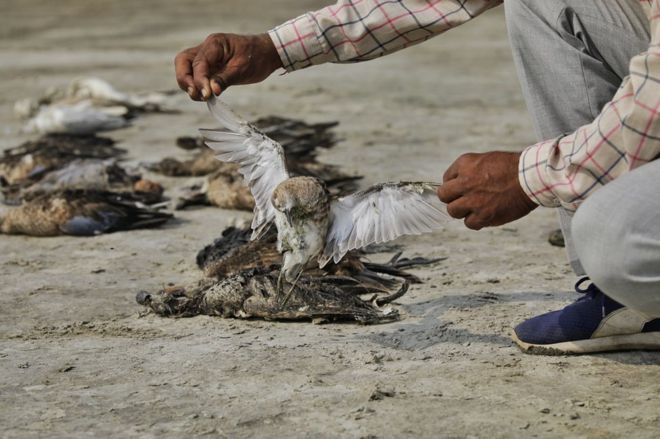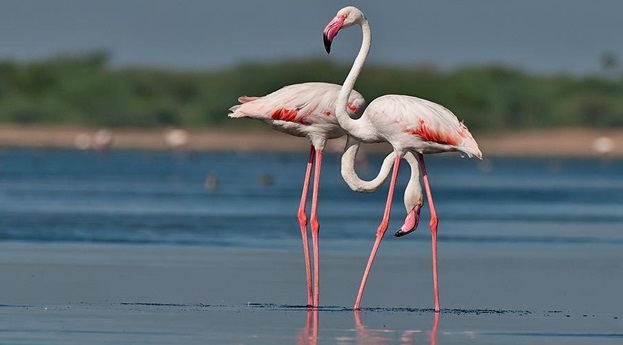In a shocking news coming from Rajasthan, thousands of migratory birds of various species were reported to be dead around Sambhar Lake, the country”s largest inland saltwater lake near Jaipur.
The news sent shock waves among the locals and authorities in the region as reasons behind the tragic incident were being probed upon.
The birds, numbering around 1,500, were found dead on Sunday in over five to seven square km area around the Sambhar Lake, which is a well-known wetland of international importance and is visited by tens of thousands of migratory birds during winter.
Officials suspect water contamination as one of the reasons for the deaths but an official report is still awaited. Though the official toll was 1,500, locals claimed the number of dead birds could be as high as 5,000.
The dead birds include the Northern Shoveller, Brahminy Duck, Pied Avocet, Kentish Plover and Tufted Duck, among others.

According to the locals who first reported the deaths, carcasses of hundreds of dead birds including plovers, common coot, black winged stilt, northern shovelers, ruddy shelduck, and pied avocet were found scattered on the edge of 12-13 km of the catchment area of the lake.
According to Jaipur Chief Conservator of Forests Arun Prasad, the birds belong to roughly 15 species.
“It has been happening for the last 3-4 days. We have collected the samples and sent them to the National Institute of High Security Animal Diseases (NIHSAD) in Bhopal, which will send a report in a few days,” he said.
A medical team from Jaipur has collected a few carcasses and water samples are being sent to Bhopal for further examination.
Ashok Rao, a veterinary doctor and part of the team, said that while the exact reason for the deaths was uncertain, he ruled out the possibility of bird flu.
“At initial examination we did not find any sort of secretion from the birds, which is a giveaway in the cases of bird flu,” he said.
R G Ujjwal, nodal officer, animal husbandry department, joined Rao and listed possible reasons behind the mysterious calamity.
“Their could be some sort of contamination in the water. The increased salinity of the water could also be another reason, as it increases salt concentration in the blood, which can further lead to slow blood flow and the internal organs like the brain may stop working,” Ujjwal said.
The lake is also a favourite of flamingos, stilts, stints, garganey, gulls and a number of other species of birds.
The strange episode has left villagers and people of the forest department baffled for the lack of a sensible explanation.
The affected bird species were Pallas’s Gull, Pied Avocet, Ruff, Common Red Shanks, Marsh Sandpiper, Wood Sandpiper, Common Sandpiper, Lesser Sand Plover, Little Ringed Plover, Kentish Plover, Common Coot, Green Bee-eater, Black winged Kite, Ruddy Shelduck, Black-winged Stilt, Temmink’s Stint, Gadwalls, Black/brown headed Gull, Gull-Billed Tern, Greater Flamingo, Lesser Whistling duck, Creak, Silverbill, Knob-billed duck, Mallard, Ferruginous Duck, Northern Shoveler, Common Teal, and Northern Pintail.
Meanwhile, the carcasses were collected in a tractor-trolley and buried in a ditch. A total of 669 dead birds were buried while hundreds lay strewn around as the forest staff hesitated to venture into the slippery muddy areas.
This is the second such incident in the state within a week. Last Thursday, 37 demoiselle cranes were found dead in Jodhpur”s Khinchan area. Their viscera too have been sent for investigation and reports are awaited.














